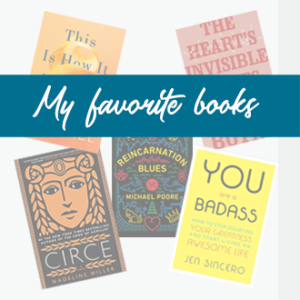My modified Miracle Morning routine
A couple of years ago, I read The Miracle Morning — a super motivational book about creating positive life changes by adopting a consistent morning routine. The author, Hal Elrod, describes how he picked six activities commonly considered the most effective self-help practices — meditation, affirmations, visualization, reading, journaling, and exercise — and began doing them first thing in the morning, for just ten minutes each. That meant he was spending the first hour of his day on his own personal growth and development.
Why is this an awesome idea? Think about how you spend your mornings. Most of us hit the snooze button a few times, stumble out of bed, rush to get out of the house on time, fight traffic, arrive at work already feeling stressed, and then start reacting to whatever the day throws at us. It’s hectic, stressful, and reactionary rather than intentional. We’re reacting to circumstances rather than choosing how we spend our time. That was me for a long time, even after I started working from home (just minus the traffic part).
Before I go any further, I need to make it clear that I have never been a morning person. Waking up has never come easily for me. I do not spring out of bed alert and ready to start the day (although that is starting to change … more on this later). I took exactly one first-period class my freshman year of college (Intro to Computer Science) and thereafter successfully arranged my schedule so I didn’t need to use an alarm clock for the rest of my college career. Several years ago, when I was super into hot yoga, I used to get up and attend a 6am Bikram class, until it was cancelled due to poor attendance (sometimes on the part of the instructor). But generally, I have never loved mornings.
But Elrod’s book got me thinking about mornings differently. When you spend the first hour of your day working on yourself, things happen. You feel less stressed and more in control. You set the tone for your day. You get more done. You can be proactive and design your day with intention instead of reacting to everything around you.
Elrod’s book goes into more detail on why these practices are beneficial and how things like affirmations and visualization work. I won’t go into all of that here. If you’re interested in his recommendations for his “miracle morning” routine, you can read his book or find a blog post that describes it — I’m sure there are tons of them out there.
Rather, I wanted to discuss how I’ve adapted Elrod’s recommendations to work for me. As a writer, I knew ten minutes of journaling was not going to be enough for me. I need at least double the time for journaling, plus actual writing time (which to me is different than journaling time).
My morning routine
Lately, I’ve been getting up at 5:30, since my morning routine takes at least two hours. And you know what? I LOVE it. When I devote time to my own personal growth and creative work first thing in the morning, I feel more balanced, less stressed, and more productive. Doing my creative work first eliminates the risk that I won’t get it done later in the day because I work too late or I’m too tired or brain dead to write. Not only that, but doing my creative work first energizes me to do everything else I need to do.
So here’s how I do it. And if you’re wondering how I made the switch to getting up at 5:30 every morning, keep reading.
1. Journaling
I do the recommended ten minutes of free writing. This is akin to Julia Cameron’s concept of morning pages, but instead of three pages, I just do one.
2. Goal setting
Next, I write down my top ten life goals. Yes, every day. There’s a specific way of doing this — they must be written in the first person and in the present tense. I cover this in more detail in another post.
If you have time to do just one thing in the morning, do this. This is something I’ve been doing for years, and it’s astounding to look back and see how many of my goals have come to fruition. I wanted to go on a yoga retreat to Costa Rica. Check. (And I’ve been back to Costa Rica three more times.) I wanted to work from home. Check. I wanted work that I enjoy that is related to health and wellness. Check. I wanted to be self employed without the burden of constantly having to look for work. Check. Now, several of my top goals are related to finishing my novel, finding an agent, and getting it published.
3. Meditation
If you’ve never meditated before, don’t worry. Meditation can be as simple as sitting in silence and focusing on your breath for a few minutes.
Meditation has been shown to promote numerous benefits, both physical and psychological. Meditation literally changes the brain, creating new neural pathways that help decrease anxiety, enhance empathy and understanding, and promote feelings of calm and centeredness.
A lot of people think they can’t meditate because they can’t turn off all the thoughts in their brain. No one can. Not without years of practice. When you find your mind wandering, just notice it without judgement, and bring your attention back to your breath. Guided meditations can help with this, especially if you’re new to meditation.
I like Insight Timer for meditation. It’s free, and there are literally hundreds of guided meditations you can try — ranging from one minute long to an hour or more. You can choose from meditations that address topics such as stress, clarity, focus, motivation, emotional healing, grief, sleep and relaxation, patience, gratitude, and more. Or you can just use the timer. I usually pick a guided meditation that’s around ten minutes long and then follow it with another five minutes on the timer, during which time I do some visualization around my biggest life goals.
4. Reading
This is typically devoted to some sort of self help or personal development book. In many cases, the type of books I read may involve some additional writing or meditation exercises. Some of my recent favorites include The Four Desires and The Untethered Soul. I may also read some books or articles related to writing.
5. Writing
Now it’s time for actual writing. Or actually editing, since my manuscript is currently in revision. Obviously ten minutes isn’t enough to get any significant work done, so I usually aim for an hour. More often than not, once I get going, I don’t want to stop. But after a while, the dog gets up and starts staring at me, and I start feeling like I really need a shower.
6. Walk the dog
I suppose you could count this as exercise. Depending on how long it takes Murray to do his business, we may be outside for half an hour, but we’re usually moving at a leisurely pace. I may use this time to do some more “reading” via an audiobook — again, often something related to personal growth or writing.
How I do it
So how do I make this all happen before 8am? Obviously, getting to bed early is a big part of it, as are proper nutrition and hydration, so I feel my best and have more energy. But the thing that has made the biggest difference lately in my energy level and my ability to get up in the morning has been intermittent fasting. Or, more accurately, time-restricted feeding. When I’m fasting, I leave at least 16 hours between dinner and breakfast the next day. This may mean that I don’t eat anything until noon, if I finished eating dinner at 8pm the night before.
Why intermittent fasting?
Intermittent fasting has been scientifically proven to deliver numerous health benefits — among them, greater energy and mental clarity. When your body isn’t constantly busy with digestion, it can devote energy to other things, such as cellular repair and rejuvenation. But, you have to wait at least 16 hours between meals to see real benefits. I do allow myself coffee in the morning, usually with a half-scoop of collagen powder. Anything more than 50 calories will break your fast.
I don’t fast every day. It might depend on how hungry I am or what I ate the day before. I also don’t like to fast while I’m menstruating. (I don’t know if there is any research on whether you should or shouldn’t fast while menstruating, I just know that I tend to feel better if I get in some extra protein and iron during that period, so I use a bone broth protein powder in my green smoothies.)
I will also note that for the past 18 months or so I have been on a ketogenic diet, which makes intermittent fasting much easier, because I’m rarely hungry. If you’re curious about keto, you can learn more about it on my nutrition blog.
A word on limiting beliefs
Another point I want to make is that “I’m not a morning person” is a story I have been telling myself my entire life. As long as I continue to say it and believe it, it will continue to be true. So while I’ve used these words here to illustrate the significance of the change I made in my morning routine, it is something I now avoid saying to myself or in conversations with others.
We all have these types of limiting beliefs, which we often aren’t even aware of, and which can hold us back from accomplishing everything we want. If you find yourself saying something akin to “I’m not a morning person” or “I could never get up that early,” ask yourself if this is really true. Does it need to be true? What can you do to change it?
Do you have a morning routine? If not, do you think you could adopt one?
Karen Eisenbraun
Related Posts
1 Comment
Leave a Reply Cancel reply
Categories
- Books (13)
- Nutrition (1)
- Personal growth (9)
- Spirituality (2)
- Writing (2)









[…] Once you identify your personal law, pay attention to how it shows up in your life. Writing down the opposite of your personal law as an affirmation can be a powerful tool. For example, I created the affirmation, “I am intelligent enough and perceptive enough to write a moving and insightful novel.” I often write this down during my morning meditation practice. […]